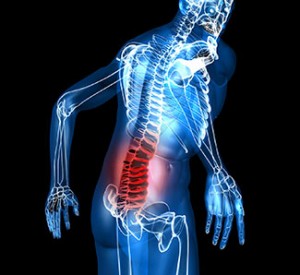The spinal cord is a major part of the central nervous system that plays a crucial role in sending nerve impulses from the brain to the different parts of the body as well as receiving information from receptor sites. Injury or damage to the spinal cord can greatly impact and even lead to loss of sensory input, movement of certain body parts, and other essential involuntary body function (e.g 
Since the spinal cord is crucial for major bodily functions, spinal cord injuries should be considered as serious medical emergencies. What you do during the first few minutes of injury can greatly impact the outcome of the victim. In case of accidents involving forceful impact of the head, neck, face or back, spinal cord injury should be considered.
What is Spinal Cord Injury?
Injury or damage to any part of the spinal cord is considered Spinal Cord Injury (SCI). SCIs are classified either as: traumatic SCI (caused by forceful impact such as during fall, vehicular accidents, sports injuries and violence) or non-traumatic SCI (caused by an underlying health condition such as disease, tumor or infection). In both these classifications, the person may suffer impairment of function or paralysis of certain body parts.
What is the Incidence of Spinal Cord Injury?
Although SCI can occur to people of all ages, it is more common among people aged 15 to 35 years. Car accidents account for 38.5% of traumatic SCIs, 24.5% percent due to violent encounters involving knives and guns. The rest are caused by falls, accidents and work-related accidents. Moreover, about 2-3% of trauma victims sustain spinal injuries and around 25% of those suffered extension of injuries due to delayed diagnosis or improper manipulation at the scene of accident. The annual healthcare cost of managing and treating SCIs is around $4 billion.
Immediate Management of Suspected SCI
As mentioned above, improper manipulation of victims of SCI can lead to permanent paralysis. Here are some general guidelines on how to prevent complications of SCI.
- Avoid moving the victim if spinal cord injury is suspected, unless there is clear danger or threat to the life of the victim (example risk of explosion, fire and oncoming traffic). If the victim is in immediate danger and moving him becomes necessary, keep the head and neck well supported and aligned while moving the victim to safety.
- Do not remove the victim from the water if he is submerged in swimming or diving accident. Float the victim facing up until rescue services arrive.
- Call 911 or your local emergency services to transport or move the victim if spinal injury is suspected. Waiting for professional rescue service to arrive helps reduce the risk of injury to the spinal cord and improve the outcome of the casualty.
Where to Learn More?
To learn more about recognizing and managing victims of severe musculoskeletal emergencies enrol in workplace approved first aid classes. Both standard childcare and standard first aid cover the topics of spinal injuries and immobilization.
Related Video to Spinal Injuries
http://www.youtube.com/watch?v=vJ1XCEdNvv8
